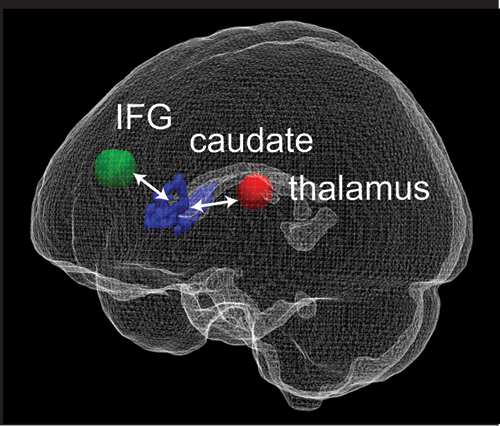Research
Role of Norepinephrine in Alzheimer's Disease
The locus coeruleus is the brain’s major source of the neuromodulator norepinephrine, and is also profoundly vulnerable to the development of Alzheimer’s disease related tau pathology. Norepinephrine plays a role in neuroprotective functions that may reduce Alzheimer’s disease progression, and also underlies optimal memory performance. Successful maintenance of locus coeruleus neurochemical function represents a candidate mechanism of protection against the propagation of Alzheimer’s disease-related pathology and may facilitate the preservation of memory performance despite pathology.
Our new study aims to understand why some people are protected against the development of Alzheimer’s disease. This study involves brain scans at baseline and at 3-year follow-up. This study does not require medication. If you are interested in potentially being involved as a research volunteer, please complete the screening form here.
Dopamine’s Role in Executive Function
 We are interested in basic questions of how dopamine function influences cognitive processes supported by the prefrontal cortex. We pair positron emission tomography (PET) measurement of dopamine function and functional magnetic resonance imaging (fMRI) to examine how variability in dopamine may modulate specific prefrontal cortex networks involved in executive function.
We are interested in basic questions of how dopamine function influences cognitive processes supported by the prefrontal cortex. We pair positron emission tomography (PET) measurement of dopamine function and functional magnetic resonance imaging (fMRI) to examine how variability in dopamine may modulate specific prefrontal cortex networks involved in executive function.
Our data support a model by which dopamine in the caudate increases synchronization of a brain network including inferior frontal gyrus (IFG) and thalamus. This figure is adapted from Berry et al., 2018; Journal of Cognitive Neuroscience.
How Do Rewards and Punishments Shape Our Memory?
 It makes intuitive sense that positive or negative experiences will be remembered better than neutral ones. We are testing hypotheses that dopamine is involved in the imprinting of these salient experiences into memory.
It makes intuitive sense that positive or negative experiences will be remembered better than neutral ones. We are testing hypotheses that dopamine is involved in the imprinting of these salient experiences into memory.
Pairing houses with monetary rewards or punishments influences whether we will remember them later. Our early research reveals age differences in how reward and punishment strengthen memory. We are investigating how these biases relate to financial decision making.
How Does Dopamine Function Change Across the Lifespan?
 Traditional views of aging suggest that dopamine function declines across the lifespan. Our research has indicated that this story is not so clear. Older adults, on average, may be producing more dopamine than young people. We are currently examining how multiple aspects of dopamine function (dopamine synthesis rates, dopamine release and receptor density) come together to predict brain activity and cognitive performance.
Traditional views of aging suggest that dopamine function declines across the lifespan. Our research has indicated that this story is not so clear. Older adults, on average, may be producing more dopamine than young people. We are currently examining how multiple aspects of dopamine function (dopamine synthesis rates, dopamine release and receptor density) come together to predict brain activity and cognitive performance.
The balance of multiple components of the dopamine system may be the key factor in determining whether the system is functioning optimally or is dysregulated. According to our working model, excessive and deficient dopamine function can disrupt brain activity and performance. This figure is adapted from Berry et al., 2019, Cognitive Affective and Behavioral Neuroscience.